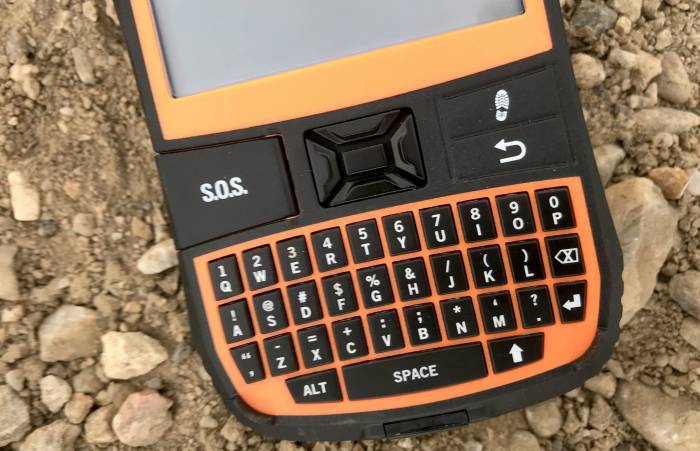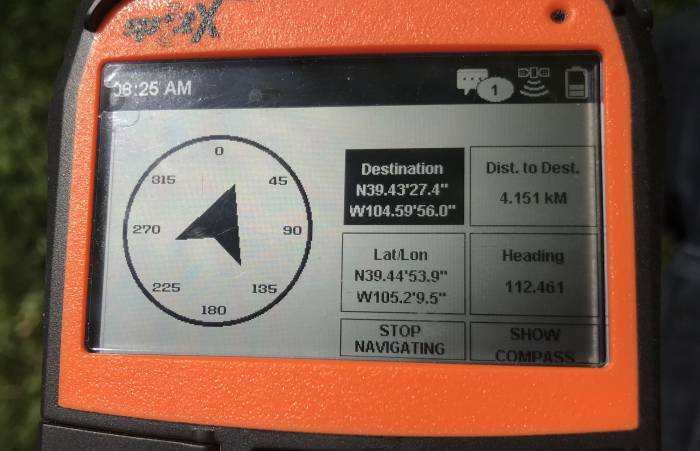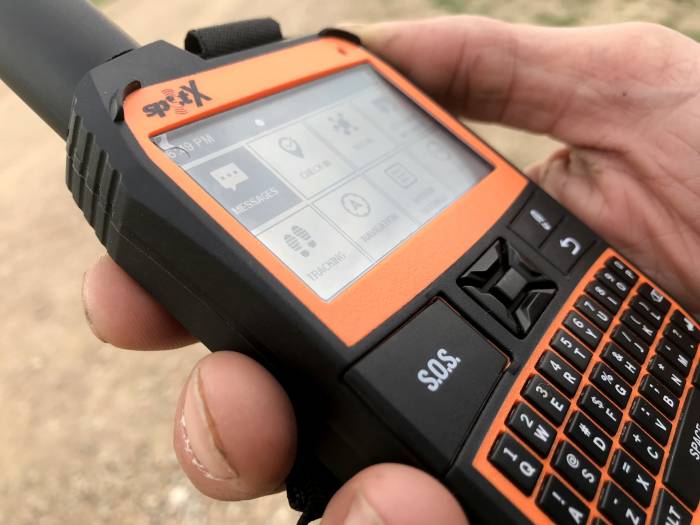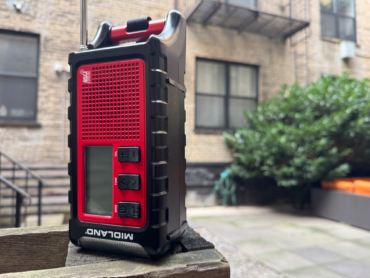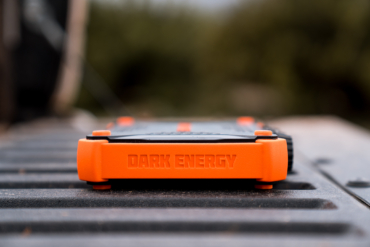SPOT announced a new device that can send and receive messages through satellites from nearly anywhere in the world. Meet the SPOT X.
For several years, the brand SPOT has offered a very small utilitarian device that sends SOS messages from almost anywhere. And over time, the brand claims its product has initiated nearly 6,000 rescues around the world.
Today, it takes a big step up in the realm of off-grid communications. The SPOT X ($250) is a powerful sat-comm device with brand-new features and capabilities that rival those of competitors.
We got our hands on a beta testing unit to try out for a couple days for this early review.
Looking for a new satellite messenger? To see how the SPOT X stacks up, check out GearJunkie’s Best Satellite Messengers Buyer’s Guide.
SPOT X Satellite Messenger: What It Does
The SPOT X communicates through both GPS satellites and the Globalstar network to transmit text messages and GPS coordinates. This means it doesn’t need cell phone service and should work from nearly anywhere. But it does need a clear view of the sky.
It has a complete QWERTY keyboard to type messages and a black-and-white screen operated by a few buttons. Unlike other devices, it does not work in conjunction with a cell phone. This device is standalone, with all messages typed and sent directly from the SPOT X.
To the SPOT X, SPOT adds more social communications to its critical location and rescue foundations. Here’s a brief rundown of its features:
- Two-way satellite messaging: Send and receive messages and short emails
- SOS.: Emergency notification and direct two-way message communication with 24/7 search-and-rescue services through the GEOS International Emergency Response Coordination Center
- GPS tracking: Waypoints tracked via Google Maps at intervals of 2.5, 5, 10, 30, or 60 minutes
- Check-in: Users can let contacts know they are OK with the push of a button
- Post to social media: Link to Facebook and Twitter accounts to share adventures with followers
- Navigation: Built-in compass and programmable waypoints
- Keyboard: Easy-to-use illuminated QWERTY keyboard, usable in any light setting
- Battery life: SPOT X has a rechargeable battery with an average of 10 days of battery life when tracking in 10-minute intervals
SPOT X: Review
So you spend a lot of time in the backcountry, or in remote corners of the globe and want to stay in touch? This one might be for you. It will compete with other satellite communication devices now on the market, notably the Garmin inReach and inReach Mini.
It’s available now for $250, with several annual service plans available starting at $20 per month.
Using it for a couple days near our office and short excursions around Denver, the SPOT X worked well. I found it intuitive to use, but, like any piece of technology, it did come with a learning curve.
The keyboard, while small, was easy to type on. My colleagues and I sent a few messages to our cell phones and back, and it was really interesting to see this in action.
We only had the device for a brief time, so this review section will expand as we uncover more about it.
Cell Number and Messaging
A notable feature of the SPOT X is that it has its own dedicated cell phone number. This means that anyone with the number can simply text you from their cell phone. You will receive the message within minutes and can reply directly to their cell message.
This worked well. It was easy and fast to send and receive messages.
Tracking
SPOT devices are well-known for tracking capabilities. Many people use these on long trails to let friends and family know where they are or to verify FKT attempts.
The SPOT X also has this capability. We tested it quickly on a 20-mile drive from Denver up to the Erie Singletrack bike park this week. It worked like a charm, pinging every five minutes to note our location as we traveled up I-25, then took a wrong turn on the way to the park. Check out the screen grab below.
We’ll take it hiking soon and update this section with more thorough information.
Navigation
The SPOT X’s navigation seems pretty rudimentary. It allows you to save waypoints and navigate to them.
In navigation mode, it gives an arrow directed at the waypoint, destination coordinates, distance to destination, current latitude and longitude, and heading.
It can also provide heading, bearing, course, elevation, and speed. It does not have an internal map though, so you won’t see a familiar Google Maps-type GPS view.
Finally, it does include a compass feature.
Post to Social Media
Users can post messages to both Twitter and Facebook directly from the SPOT X without the use of a phone.
I could see explorers, climbers, or others using this feature to keep followers updated on big adventures. As the device does not pair with a phone or have a camera, it cannot share images.
SOS
OK, we obviously didn’t test this, as that would be breaking the law. But SPOT assured us that this feature works. And with its claim of almost 6,000 rescues initiated, we expect that is true.

The big improvement here over other SPOT devices is that once the big SOS button is pushed, you can communicate with rescuers through the messaging features.
Thus, you can tell them about your situation, and possibly help rescuers find you or be better prepared for the emergency when they arrive.
Worth noting: The SOS Button is located under a hard plastic cover that you need to pry open with a fingernail. It seems well protected to prevent accidental activation.
SPOT X: In the Hand
The communicator measures 6.54 x 2.9 x 1.75 inches and weighs 7 ounces. While more than twice the size of a SPOT Gen3, it’s still a small device easily stowed in a backpack.
It has a hard, slightly rubbery finish, with small rubber buttons reminiscent of the Blackberry of the early 2000s. They are easy to type on, although it could be a little more challenging with cold fingers or gloves.
The screen toggles with four directional buttons and a center select button. After remembering it’s not a touchscreen, it was easy to navigate the home page, which displays Messages, Check-In, Social, Fetch New Messages, Tracking, Navigation, System Settings, and SOS.
The device has a large antenna and strap with a carabiner on top. And it has a USB charging port on the bottom.
Overall, I found the form nice and intuitive. I have medium-size hands and think it would be fine for most people – with the possible exception of those with truly massive fingers.
SPOT X: A New Sat-Comm Tool
The SPOT X is an exciting new tool for remote exploration. It will take a little more time to see how it stacks up with the competition. But at first glance, it looks promising.
As a standalone device, it should provide easy two-way communication and tracking from nearly anywhere on the globe at a price many can afford.
And ultimately, that should help provide more peace of mind when far off the grid.


